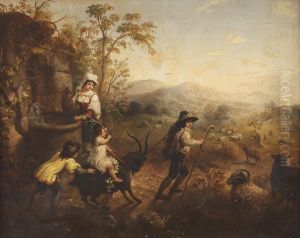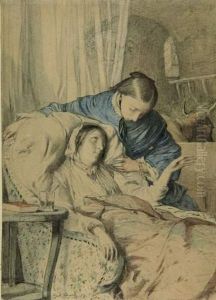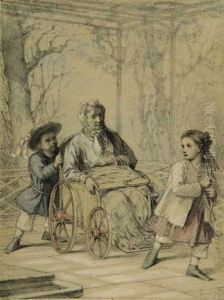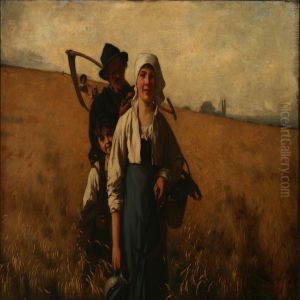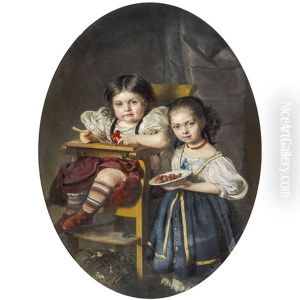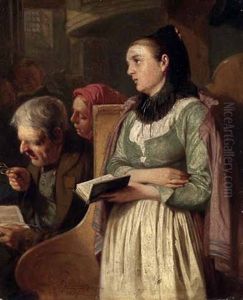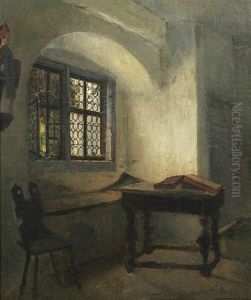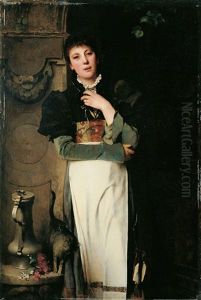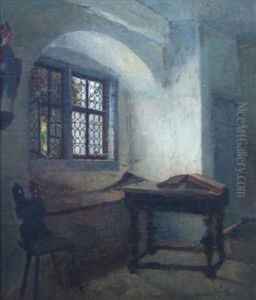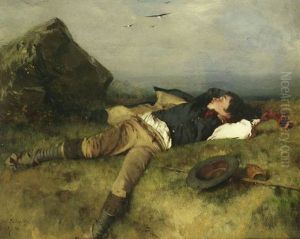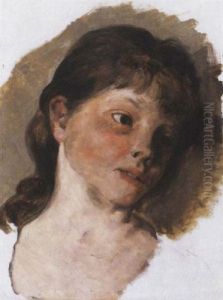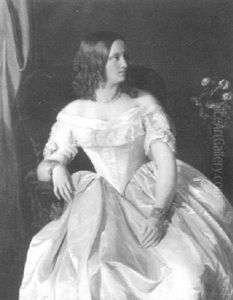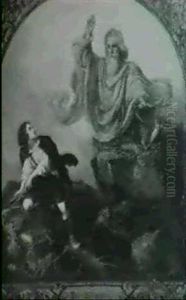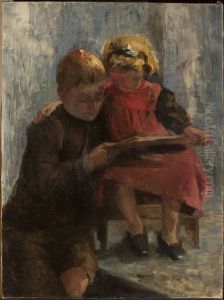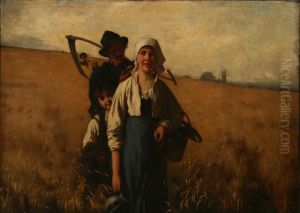Julius Scholtz Paintings
Julius Scholtz was a prominent German painter known for his contributions to the genre of history painting and portraiture, born on March 2, 1825, in Breslau, which was then part of Prussia (now Wrocław, Poland). His artistic journey began at the Academy of Fine Arts in Dresden, where he was significantly influenced by the styles and teachings of his time. Scholtz's early works were primarily historical scenes and portraits, reflecting the academic rigor of his training and the prevailing tastes of the 19th century.
After completing his studies, Scholtz embarked on several study trips across Europe, including visits to Belgium, the Netherlands, and Italy. These travels played a crucial role in his artistic development, exposing him to a variety of artistic styles and methodologies. Particularly, the Italian Renaissance and the Dutch masters of the 17th century left a lasting impact on his approach to painting, enriching his palette and deepening his understanding of light and shadow.
Upon returning to Dresden, Scholtz quickly established himself as a respected artist and teacher. He became a member of the Dresden Academy of Fine Arts and later a professor, where he influenced a generation of German artists. His works from this period showcase a refined technique and an ability to capture both the grandeur of historical narratives and the subtleties of individual character in his portraits. Scholtz's historical paintings often depicted pivotal moments and figures from German and European history, characterized by meticulous attention to detail and a dramatic use of light.
Despite his success, Scholtz's work remained deeply rooted in the traditions of the 19th century, and he was somewhat resistant to the emerging trends of Impressionism and Post-Impressionism that began to dominate the European art scene towards the end of his life. Nevertheless, his contributions to German art were significant, and his paintings continue to be appreciated for their technical skill and historical value.
Julius Scholtz passed away on October 21, 1893, in Dresden. His legacy is preserved in the collections of various museums and galleries across Germany and beyond, where his works stand as testament to his skill as a painter and his dedication to the craft of historical and portrait painting.
